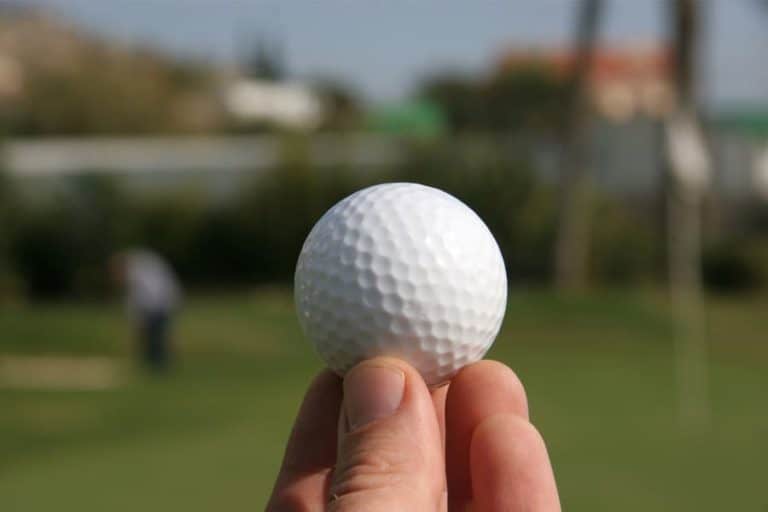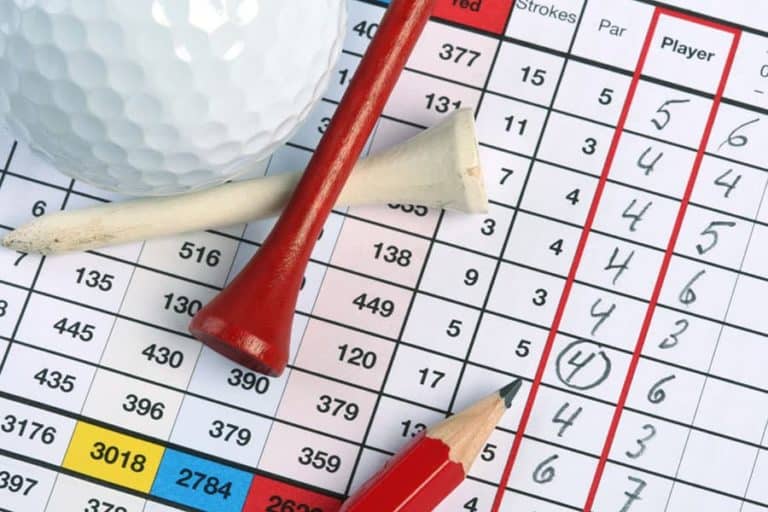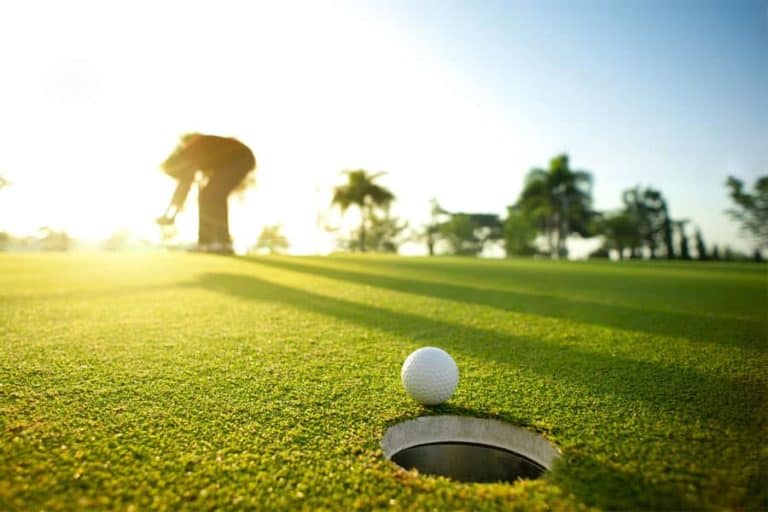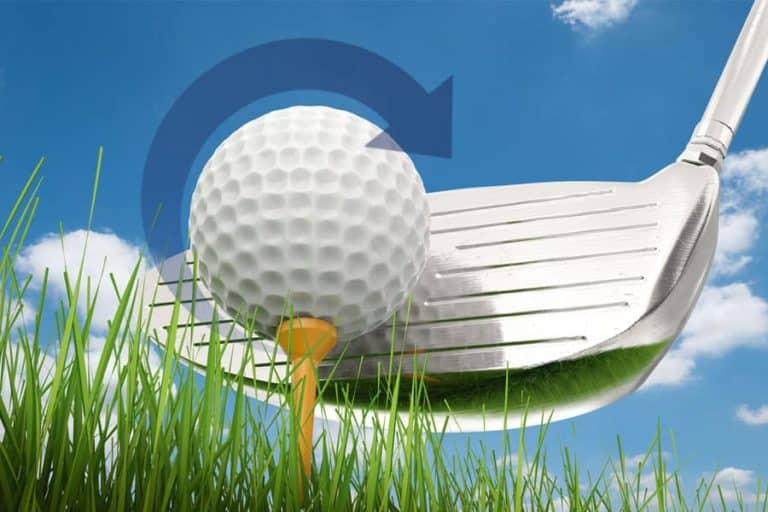Chicken Wing Golf Swing: Causes, Drills And How To Fix It?

In golf, the ‘chicken wing’ is a swing flaw that can significantly disrupt your game. It occurs during the follow-through when the lead arm takes on the appearance of a chicken wing, with the elbow lifting upward and the arm moving away from the body.
Despite its seemingly harmless nature, understanding the detrimental impact of the chicken wing is essential to avoid the consequences of this swing flaw.
I. What is a chicken wing golf swing?
A “chicken wing” golf swing is a distinct flaw in a golfer’s swing that can disrupt their swing tempo and rhythm. It occurs when the lead arm (the left arm for right-handed golfers and the right arm for left-handed golfers) fails to fully extend through the impact zone.
Instead of maintaining a straight line with the lead arm and the club, it forms an awkward angle resembling a chicken’s wing. This flaw is characterized by a significant bend in the lead arm well before impact, causing the clubface to open prematurely.
As a result, golfers with a chicken wing in their swing often experience erratic shots, poor contact with the golf ball, reduced distance, and a persistent slice. It’s essential to recognize and address this issue to improve one’s golf game.
II. Causes of Chicken Wing Golf Swing
Here are the causes of a dreaded chicken wing golf swing:
- Crowded address position, forcing arms to pull in
- Incorrect posture and spacing, with arms too close to the body
- Attempting to lift the ball improperly, leading to an incorrect upward motion
- Excessive efforts to avoid divots or ground contact
- A steeper downswing path, often associated with slicing
- Failure to keep the lead arm close to the chest during the downswing
- Limited backswing rotation, causing compensation in the downswing.
- Lack of extending the arms correctly during the downswing
- Poor balance and excessive head movement
- Lack of coordination between arms and legs during the swing
III. Common misconceptions of the chicken wing golf swing
Before diving into the intricacies of the chicken wing swing, it’s essential to dispel some common misconceptions. Some golfers mistakenly believe that a slight bend in the lead arm is acceptable, even preferable, in certain situations.
While this might work for a select few golfers, the majority will find that a proper extension of the lead arm yields more consistent and powerful shots. The chicken wing is indeed a flaw that should be addressed for players seeking to improve their game.
IV. How do you identify chicken wing swing?
Identifying a chicken wing swing is crucial for golfers looking to improve their game.
- Lead arm bend: Check for a noticeable bend in your lead arm during the follow-through.
- Elbow position: Observe if your lead elbow points upward or away from your upper body.
- Bending the wrist and pointing fingers: Another characteristic of a chicken wing is bending your wrist and pointing your fingers toward the imaginary target.
- Ball Flight Issues: Be attentive to inconsistent ball contact or a tendency to slice the ball, as these can signal the presence of a chicken wing in your swing.
V. How do you fix your chicken wing?
Before we dive into the specifics of correcting the “chicken winging” in your golf swing, it’s essential to understand the correct and incorrect positions of your front arm. This understanding will serve as the foundation for making the necessary improvements.
1. Visualizing the correct follow-through position
- Stand Tall: Begin by standing upright with your arms hanging naturally at your sides.
- Position your front forearm: Lift your front forearm (left for right-handed players) so that it’s parallel to the ground while keeping your elbow close to your side.
- Extend your hand: Extend your hand as if you’re offering a handshake, and then rotate your arm towards an imaginary target, aligning it straight left.
- Creating the “L” shape: When viewed straight-on, your entire arm should form an “L” shape. This represents the correct follow-through position in golf.
2. Fixing the chicken wing golf swing
With a firm grasp of the correct and incorrect positions, let’s focus on how to eliminate the chicken wing from your golf swing:
- Maintain Elbow Proximity: The key to a proper follow-through position is to keep your lead elbow close to your side throughout the entire swing.
- Roll Your Wrist, Don’t Bend: When you reach the follow-through, concentrate on rolling your lead wrist without bending it. This wrist action contributes to a smooth follow-through without the chicken wing appearance.
VI. Why should you fix the chicken wing in your golf swing?
The chicken wing can indeed have a profound impact on your golf game, resulting in several detrimental outcomes:
- Loss of Distance: A chicken wing restricts the extension of the lead arm, resulting in less power transfer to the ball. This translates to reduced distance off the tee and with irons.
- Poor Contact: A bent lead arm can lead to inconsistent ball striking, causing shots to be fat, thin, or off-center. This can lead to frustration and decreased confidence on the golf course.
- Slice Tendency: The open clubface caused by the chicken wing can make it hard to control the ball’s direction, often leading to slices.
VII. Swing drills to fix your chicken wing
Correcting a chicken wing in your golf swing requires practice swings and drills to break the habit. Here are some effective drills to help you eliminate the chicken wing and improve your swing:
1. Arm on Bicep drill
- Start by grabbing a golf club and holding it in your front hand.
- Next, take your backhand and firmly grasp your front bicep against your side.
- Ensure that your back arm reaches across your chest to brace the front bicep against your side.
- Take slow, controlled half swings using only the free arm.
- As you make contact with the golf ball, you’ll notice that it’s challenging to create a chicken wing because the bracing hand won’t allow it.
- Continue hitting pitch shots in this manner until it becomes second nature to resist the chicken wing.
2. Weaken Your Grip Drill
Assess if your grip may be contributing to the chicken wing, especially if you’re struggling with hooking or pulling the ball. A strong grip means your hands are rotated too far to the right on the grip for a right-handed player.
To weaken your grip, move your hands together more on top of the grip. This adjustment allows the clubface to come through impact in a more open position, reducing the need for a chicken wing.
3. Under-Arm Drill
- Grab a golf glove or a headcover and place it under your lead arm, pinning it to your side.
- Take small, deliberate swings without allowing the object to fall to the ground.
- If you have a chicken wing, the object will likely fall to the ground shortly after impact, indicating the need for improvement.
VIII. Tips to fix chicken wing Golf swing
- Check your grip: Ensure a neutral grip to avoid contributing to a chicken wing.
- Maintain arm connection: Keep your lead arm connected to your body throughout the backswing to prevent a chicken wing.
- Pay attention to alignment: Verify proper foot positioning to prevent a closed stance and maintain body connection.
- Correct your posture: Maintain a balanced and athletic posture by bending forward from your hips.
- Focus on rotation: Emphasize natural rotation in your full swing instead of a “back and through” motion.
- Utilize alignment sticks: Bring alignment sticks to the range to assess and adjust your stance, ball position, and hip rotation. For instance, David Leadbetter StraightAway Swing Aid stick helps golfers fix their chicken wing swing.
- Embrace reflective practice: Record a video and review it every few shots, making adjustments to your grip, arm connection, alignment, posture, and rotation during practice sessions to eliminate the chicken wing golf swing.
Conclusion
Keeping your lead elbow close and focusing on wrist roll instead of bending can eliminate the chicken wing golf swing, leading to a more controlled, powerful, and consistent golf swing.
While these corrections may seem simple when practiced without a golf club, executing them during a full-speed swing can be challenging. The key is practice and patience.








